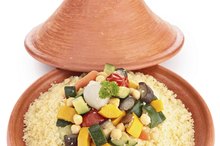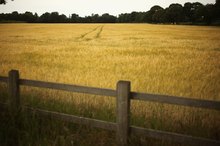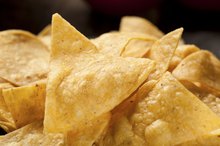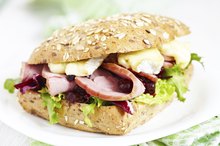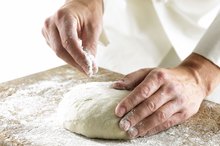What does fact checked mean?
At Healthfully, we strive to deliver objective content that is accurate and up-to-date. Our team periodically reviews articles in order to ensure content quality. The sources cited below consist of evidence from peer-reviewed journals, prominent medical organizations, academic associations, and government data.
- National Digestive Diseases Information Clearinghouse; Celiac Disease; September 2008
- MayoClinic.com; Gluten-Free Diet; January 2010
The information contained on this site is for informational purposes only, and should not be used as a substitute for the advice of a professional health care provider. Please check with the appropriate physician regarding health questions and concerns. Although we strive to deliver accurate and up-to-date information, no guarantee to that effect is made.
What Can I Eat if I'm Allergic to Wheat & Corn?
Food allergies can be annoying at best, or potentially lethal at worst. If you are allergic to two of the most common ingredients in the American diet, it may seem like you're stuck with eating steak and vegetables for the rest of your life. The good news is the the rise in food allergy awareness has made more alternatives available. You may have to learn a few new recipes and bring your reading glasses to the grocery store, but living without wheat and corn is easier than you think.
Baked Goods
Manufacturers have made more non-wheat flours and alternative baked goods available. While wheat, rye, semolina, spelt and graham flour are off-limits to you, many baked goods can be successful with alternatives like rice flour, potato starch, tapioca flour, coconut flour and bean flour. Most larger health food stores carry these products, but regular grocery stores carry breads made without wheat if you prefer not to make your own. Look for baked goods labeled "gluten-free," and check the ingredients label for corn 2.
- Manufacturers have made more non-wheat flours and alternative baked goods available.
- While wheat, rye, semolina, spelt and graham flour are off-limits to you, many baked goods can be successful with alternatives like rice flour, potato starch, tapioca flour, coconut flour and bean flour.
Cereals
Allergy to Sourdough Bread
Learn More
Most boxed cereals are problematic because they are made with either wheat or corn. There are exceptions though, like puffed rice or millet and oat-based cereals. Oatmeal is a smart breakfast option for those with wheat and corn allergies because it provides a healthy dose of fiber. Experiment a little and try unfamiliar cereals like arrowroot or tapioca, or make potato pancakes with an alternative flour. Steer clear of grits and farina, which contain corn and wheat, respectively.
- Most boxed cereals are problematic because they are made with either wheat or corn.
- Oatmeal is a smart breakfast option for those with wheat and corn allergies because it provides a healthy dose of fiber.
Side Dishes
Dinner is when you may feel the least put-out by your diet restriction. You can't have regular pasta, but you can have tofu noodles from the produce section at the grocery store. You can still have potatoes, rice and beans, but avoid polenta, corn tortillas and cornbread. You can buy wheat-free dinner rolls in many health foods stores, or make your own from an alternative flour. Read labels carefully, because wheat and corn crop up where you least expect it -- many sauces and gravies contain cornstarch, and bouillon cubes, rice mixes and sausages can contain wheat.
- Dinner is when you may feel the least put-out by your diet restriction.
- You can't have regular pasta, but you can have tofu noodles from the produce section at the grocery store.
Alcohol
Gluten Sensitivity and Yeast Allergy
Learn More
Most beer is made from wheat and barley, but there are some microbrews made with allergies in mind. Read ingredient labels, and start with brands labeled "gluten-free." You can still have wine and most distilled liquors -- avoid whiskey and grain alcohol, which can contain wheat and corn. Be careful with flavored liqueurs and drink mixes -- some lower-end brand use high-fructose corn syrup as a sweetener. Examine all ingredients labels for signs of wheat and corn, or mix your own cocktails from fresh ingredients. True homemade sour mixes and simple syrup don't contain high-fructose corn syrup, so make your own for safer, better-tasting drinks.
- Most beer is made from wheat and barley, but there are some microbrews made with allergies in mind.
- Be careful with flavored liqueurs and drink mixes -- some lower-end brand use high-fructose corn syrup as a sweetener.
Related Articles
References
Writer Bio
Angela Brady has been writing since 1997. Currently transitioning to a research career in oncolytic virology, she has won awards for her work related to genomics, proteomics, and biotechnology. She is also an authority on sustainable design, having studied, practiced and written extensively on the subject.



